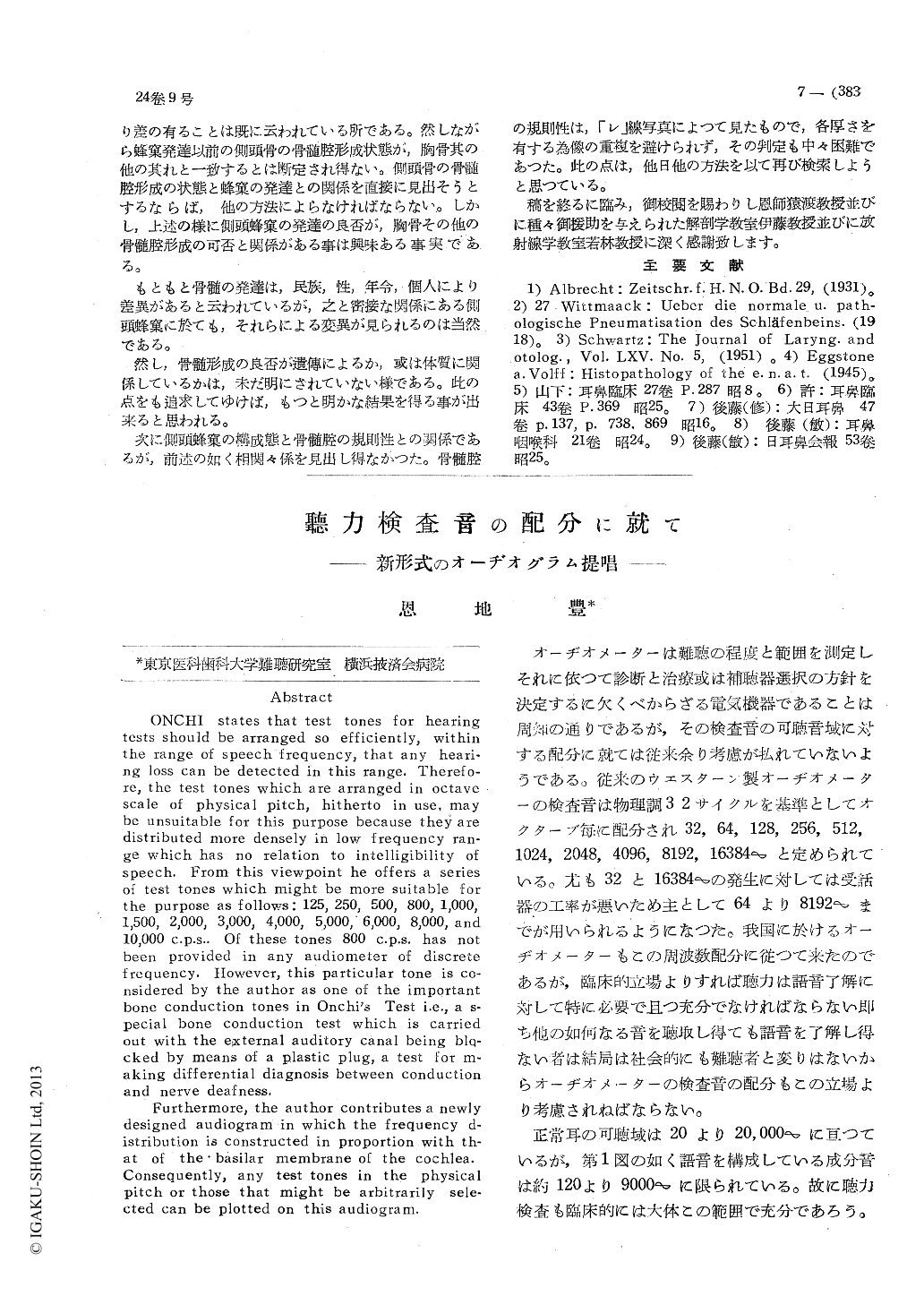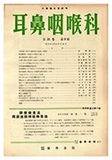- 有料閲覧
- 文献概要
- 1ページ目
オーヂオメーターは難聽の程度と範囲を測定しそれに依つて診断と治療或は補聽器選択の方針を決定するに欠くべからざる電気機器であることは周知の通りであるが,その検査音の可聽音域に対する配分に就ては従来余り考慮が払れていないようである。従来のウエスターン製オーヂオメーターの検査音は物理調32サイクルを基準としてオクターブ毎に配分され32, 64, 128, 256, 512,1024, 2048, 4096, 8192, 16384〓と定められている。尤も32と16384〓の発生に対しては受話器の工率が悪いため主として64より8192〓までが用いられるようになつた。我国に於けるオーヂオメーターもこの周波数配分に従つて来たのであるが,臨床的立場よりすれば聽力は語音了解に対して特に必要で且つ充分でなければならない即ち他の如何なる音を聽取し得ても語音を了解し得ない者は結局は社会的にも難聽者と変りはないからオーヂオメーターの検査音の配分もこの立場より考慮されねばならない。
正常耳の可聽域は20より20,000〓に亘つているが,第1図の如く語音を構成している成分音は約120より9000〓に限られている。故に聽力検査も臨床的には大体この範囲で充分であろう。次に語音構成音域内での検査音の配分は如何にすべきかの問題が起る。即ち語音構成音域内で特に語音了解に必要な音域に検査音配分が重点的に行われるべきである。
ONCHI states that test tones for hearing tests should be arranged so efficiently, within the range of speech frequency, that any heari-ng loss can be detected in this range. Therefo-re, the test tones which are arranged in octave scale of physical pitch, hitherto in use, may be unsuitable for this purpose because they are distributed more densely in low frequency ran-ge which has no relation to intelligibility of speech. From this viewpoint he offers a series of test tones which might be more suitable for the purpose as follows: 125, 250, 500, 800, 1000, 1,500, 2,000, 3,000, 4,000, 5,000, 6,000, 8,000, and 10,000 c.p.s.. Of these tones 800 c.p.s. has not been provided in any audiometer of discrete frequency. However, this particular tone is co-nsidered by the author as one of the important bone conduction tones in Onchi's Test i.e., a s-pecial bone conduction test which is carried out with the external auditory canal being blo-cked by means of a plastic plug, a test for m-aking differential diagnosis between conduction and nerve deafness.
Furthermore, the author contributes a newly designed audiogram in which the frequency d-istribution is constructed in proportion with th-at of the basilar membrane of the cochlea. Consequently, any test tones in the physical pitch or those that might be arbitrarily sele-cted can be plotted on this audiogram.

Copyright © 1952, Igaku-Shoin Ltd. All rights reserved.


